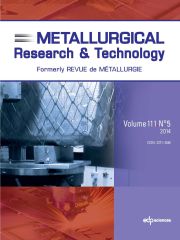No CrossRef data available.
Article contents
The spatial oscillation of velocity fields in the roll bite ofstrip cold rolling by the upper bound approach
Published online by Cambridge University Press: 10 May 2012
Abstract
Following the Upper Bound Method (UBM), the velocity field in a rolling process is theone that minimises the power function [W. Prager, P.G. Hodge, Theory of PerfectlyPlasticity Solids, Wiley, New York, 1951]. Generally, a family of velocity fields with fewparameters is studied and the velocity field which minimises the power function is thebest approximation of the real one. The lower the power, the better the approximation is.This paper presents a new family of velocity fields for the UBM approach of a rollingprocess in plane-strain conditions (2D). That family is based on the addition by an“oscillating perturbation” to a classic velocity field whose longitudinal component isconstant in the strip thickness. We show that the best field of that family gives a betterapproximation than the classic one. This study proves there is an oscillating part in thevelocity field during the rolling process. A careful observation of the fields obtained bya finite-element method, Lam3-Tec3 (1), shows that the oscillation phenomenon is in factreally present. And the oscillations predicted by the analytical model (UBM) match the FEMresults very well.
- Type
- Research Article
- Information
- Copyright
- © EDP Sciences 2012


